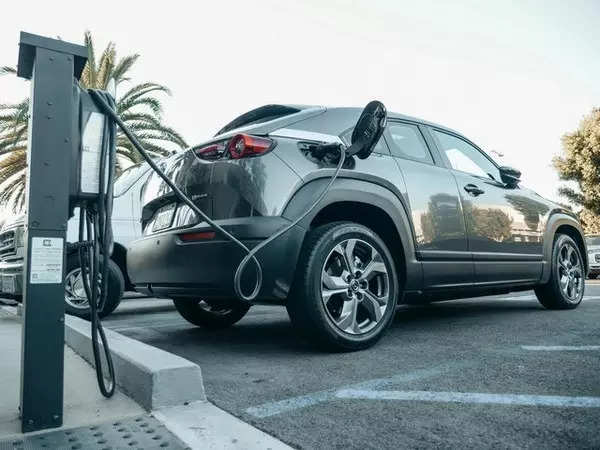
Globally, over 250,000 electric vehicles were sold each week in 2023. To put things in perspective, ten years ago in 2013, fewer electric vehicles were sold in a single year than in a single week in 2023.
In 2023, EVs accounted for 18% of all passenger car sales worldwide, 26% of all bus sales, and 47% of all 2 and 3 wheeler sales. It is evident that passenger cars are coming up to the extremely high level of electrification already seen in buses, 2W, and 3W worldwide. As of 2023, there were 40 million EV passenger cars on the road, and 302 million 2 and 3 wheelers. Furthermore, 1.7 million barrels per day of oil usage is being displaced by EVs every day, equivalent to about 3% of total road fuel demand for 2023.
The rise in EVs can be attributed to two main factors, first, a substantial global push by governments to achieve net zero emissions through various policy measures; and second, a nearly 90% decrease in battery costs over the past ten years, which has made EVs more affordable and, as a result, brought them closer to cost parity with internal combustion engines (ICE). Further, OPEX expense including maintenance for BEV comes at 0.5% of retail sale price of EV cars and 1.5% of retail sale price for ICE cars in China, Germany and the United States.
A total investment of almost USD 500 billion has been announced in this space, of which 40% has already been committed. Over 20 major car manufacturers, representing more than 90% of global car sales in 2023, have set EV targets. All this suggests that EVs have arrived and are here to stay as unlike a decade ago when technology was expensive and there was limited participation from both manufacturer and consumer and the lack of investment commitment.
India too is witnessing this structural shift. For instance, in 3W segment, 580,000 Battery Operated Electric Vehicle (BOEV) were sold in India accounting for 53% of total 3W sales for 2023. Similarly, close to 860,000 units of E-2W were sold in 2023, accounting for 5% of total 2W sales for the year. Among 4W, 73,000 units of BOEV and 325,000 units of hybrid vehicles was sold in 2023, accounting for 11% of total 4W sales in CY 2023. Roughly, EV & Hybrid accounted for 8.5% of total 2W/3W/4W sales. This was unthinkable 5 years ago. So, the shift towards EV is happening even in India. Indian government has already set ambitious EV sales target, accounting for 30% of private cars, 70% of commercial cars, 40% of buses and 80% of two and three-wheelers by 2030. In order to achieve its target, it has rolled out various policy measures like:
- FAME I & II – INR 10,000 Cr outlay
- PLI for Advance Auto Technology & Advance Chemical Cell – Outlay of INR 44,000 Cr with total investment commitment of more than INR 1.2 lakh crore
- Extension of customs duty exemption for the import of capital goods and machinery required for the manufacturing of lithium-ion cells for batteries used in electric vehicles.
- GST on electric vehicles has been reduced from 12% to 5%; GST on chargers/ charging stations for electric vehicles has been reduced from 18% to 5%.
- BOEV waiver from permit and road tax
- Battery Swapping
- OMC announcing to set-up 22,000 EV charging stations across country
Furthermore, as of March 2024 at the latest, Govt. of India announced the New Electric Vehicles (EV) policy, whereby custom duty on imported electric cars will be reduced from 70% to 15%, provided car company is committing minimum investment of US USD 500 million and set up an EV manufacturing plant in India. There are already chatters of govt. introducing FAME-III. There are different state level EV policies in addition to the central ones.
Apart from the Govt. push, a lot of traditional OEMs have also announced significant CAPEX commitment in EV and ancillary as part of their strategy. OEMs have outlined their targets for the percentage of electrification in their blueprints. Needless to say, that growth in EV will bring growth in entire EV ecosystem which can be broken down into Upstream (companies engaged in chemicals, mining of metal like lithium, raw material for battery etc), Midstream (companies engaged in electric vehicle component, Battery, technology and automation) and Downstream (Auto OEM – 2W/3W/4W etc.).
Thus, from an investment perspective, it makes more sense to participate in firms companies across the EV value chain, not just the manufacturer, as the expansion and development of the entire supply chain is crucial for the growth of EVs in India, based on cost breakdown. Remember, the global peak for internal combustion vehicles occurred in 2017. By 2027, sales of internal combustion vehicles are set to be 29% below their 2017 peak. While in short-term, inflation and its impact of consumer demand, volatility in prices of lithium/battery and the global phasing out of policy measures have led to slowdown in the rate of adoption in some countries, overall long-term structural growth continues to remain intact, and the EV disruption is just getting started in India.
EV, like any other technology will follow a “S-curve” of adoption, and in India, it is currently on the verge of being classified as a “Early Adopter theme” and as with any other thematic investing, the maximum benefit can be derived by participating when a particular theme falls under the “Early Adopter” category. However, from an investment standpoint, rather than focusing on a specific name, few segments and pockets, or a “Early adopter” theme, encourage participation across companies covering the entire value chain for a longer horizon. 7 – 8 years from now, the world may potentially witness electrification in automobile space at a pace that most of us would have underestimated today.

